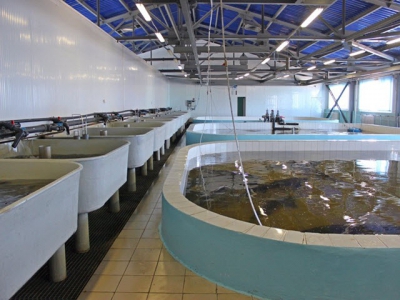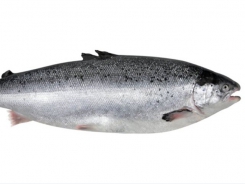Tea tree oil may support fish facing mycotoxin challenge

Fish facing mycotoxin challenge from plant-based feed ingredients may see improved antioxidant status and reactions when supported with tea tree oil in their diets, say researchers.
“The objective of this study was to evaluate whether dietary supplementation with TTO would avoid or minimize the negative impacts on silver catfish fed with an aflatoxin-contaminated diet,” the researchers said.
The researchers found that fish receiving a diet contaminated with aflatoxin had reduced antioxidant enzymes, increased lipid peroxidation and a 16.6% motility rate. The presence of the aflatoxin also raised plasmatic and hepatic ROS concentration and reduced hepatic antioxidant capacity against peroxyl radical (ACAP) levels, however, plasma cortisol amounts were not altered.
Adding TTO to the diets demonstrated a “protective effect” by and ameliorated liver damage, they added.
“TTO supplementation at [a] concentration of 1 mL kg−1 in feed may be used in fish to increase antioxidant status and reduce the negative effects caused by aflatoxins toxicity,” they added.
Aflatoxin in fish feed
As aquaculture production has increased, there has been a turn to adding vegetable-based proteins to fish feeds as a way to reduce feed costs, the researchers said. However, adding ingredients like corn and groundnut to feeds raises the chance that mycotoxins including aflatoxin B1 and fumonisin B1.
“Mycotoxins are toxic metabolites produced by fungi mainly of the genera Aspergillus, Fusarium, and Penicillium,” they said. “Food and feedstuffs prepared using mycotoxin-containing crops deteriorate nutritional content and represent a potential risk for animal and human health.”
Mycotoxicosis – high intake of mycotoxins – has been linked to negative outcomes including organ failure, neurotoxicity, carcinogenicity, immunosuppression, and reproductive and developmental toxicity, they said.
When fish are exposed to aflatoxin B1 (AFB1) over a period they also can accumulate it in their flesh and organs, the researchers said.
“In aquaculture production, the aflatoxins commonly found on feedstuffs are (AFB1), aflatoxin B2 (AFB2), aflatoxin G1 (AFG1), and aflatoxin G2 (AFG2),” they said. “AFB1 is one of the most potent carcinogens known, classified as a group I carcinogen by the International Agency for Research on Cancer (IARC, 1993) and highly hepatocarcinogenic.”
When consumed by fish, it has been connected to several pathologies including “hepatotoxicity, nephrotoxicity, and immunotoxicity,” they said. Prevention has an important role in reducing mycotoxin contamination, however, it may not be easy to find the contaminated ingredient, they added.
Why tea tree oil?
There has been a growing interest in using plants or plant-based essential oils to control mycotoxins, the researchers said. Some essential oils are known to have anti-aflatoxin, antifungal and antioxidant activities.
Essential oils (EO) also have been well accepted as additives in feed because they are considered safe, biodegradable and have low toxicity, they said. Adding, “In addition, dietary incorporation of Fennel (Foeniculum vulgare) essential oil to a feed containing 200 μg of AFB1 showed positive effects and was able to enhance immunity of Nile tilapia (Oreochromis niloticus), mitigating the toxic effects of this contamination.”
Tea tree oil has been used in aquaculture previously as it has hepatoprotective, antibacterial, antiparasitic, anesthetic and antioxidant properties, they said.
An in vitro study found that TTO had strong antifungal action against ochratoxin A (OTA), which is generated by aspergillus niger and a. carbonarius, they said. The finding suggests that it may be a way to address mycotoxin contaminating in feeds.
“TTO is usually composed of terpenes, particularly monoterpenes and sesquiterpenes, compounds formed by many secondary organic metabolites,” the researchers said. However, it can vary depending on production or harvest factors and that change may alter the microbiological properties.
Feeding trial details
In the feeding trial, 96 juvenile silver catfish received one of four diets for a 10-day period, the researchers said. The TTO used to formulate two of the trial diets was commercially available.
The diets included a control, a mycotoxin-contaminated diet with 1893 μg kg−1 of AFB1 and 52.2 μg kg−1 AFB2 (AFB), the control diet with added 1mL kg-1 TTO (TTO) or the control diet with both 2324 μg kg−1 of AFB1 and 43.5 μg kg−1 AFB2 + 1 mL kg−1 of TTO (TTO + AFB), they said. The basal diet included soybean meal, meat and bone meal, rice bran and corn.
Blood samples were taken and sample fish on each diet were collected on day 5 and 10 following the end of the feeding period, they said. Fish livers were gathered at that time for analysis. The livers were checked for reactive species production, antioxidant capacity against peroxyl radicles (ACAP), protein carbonyl content, lipid peroxidation (LOOH) amounts, glutathione S-transferase (GST) activity, glutathione peroxidase activity (GPx), superoxide dismutase (SOD) activity and total protein.
Results
Overall, there was no major difference in weight or weight gain during the feeding trial regardless of diet, they said. However, fish on the AFB diet had a mortality rate of 16.6% at the end of the study.
“AFB causes unfavorable effects on silver catfish and disturbance on plasma and hepatic antioxidant/oxidant system,” they said. “This was clearly observed by the excessive ROS production, indicating lipid and protein damage, besides causing toxic hepatitis and hepatosis.”
“Dietary incorporation of 1 mL kg−1 TTO showed a protective effect and ameliorated these drastic effects, mainly the liver damage, besides enhancement of fish antioxidant status,” they added. “Therefore, this alternative could be used as a strategy to reduce aflatoxin-related toxicity in fish.”
Adding either AFB or TTO to the diets did not change plasma cortisol levels, although levels were lowest for fish on the AFB+TTO diet 10-days post feeding, the researchers said.
Hepatic and plasma reactive oxygen species (ROS) levels grew on day 10 post feeding for fish on the AFB diet compared those on the other diets, they said. Plasma LOOH levels fell on day 10 for fish receiving the TTO and TTO+AFB diets compared to the control, and, hepatic LOOH and plasma carbonylation levels were lower for fish on the TTO and TTO+AFB diets compared to both the control and AFB diets on day 10.
Fish on the AFB diet saw plasma and hepatic ACAP levels fall five days post feeding compared to fish on the other diets and had a drop in both hepatic and plasmatic SOD activity 10 days following the feeding trial, they said. Plasma GPx activity fell for fish on both the AFB and TTO+AFB diets 5 days post feeding.
“Plasma GST activity decreased at days 5 and 10 post-feeding in animals fed with AFB compared to control, TTO, and TTO + AFB groups,” the researchers said. “However, at day 10, fish fed with TTO diet had an increase in plasma GST activity.”
Fish on both the TTO and TTO+AFB diets had a boost in hepatic GST activity at day 10, they added.
There were no histopathological alterations to liver tissue for fish receiving the control or TTO diet at day 5 or 10 post-feeding, they said. However, fish on the AFB diet showed “hepatocyte anisocytosis, degenerate multifocal modifications of the type of moderate fat infiltration, apoptosis and/or multifocal necrosis of hepatocytes, moderate nuclear pyknosis common in hepatocytes, characterizing toxic hepatitis,” on day 5 following the feeding trial.
On day 10, fish on that diet displayed an increase in the severity of their toxic hepatitis, apoptosis and multifocal necrosis of hepatocytes, reaction by Ito cells and moderate nuclear pyknosis in hepatocytes, they said.
“The addition of TTO in the diet contaminated with AFB minimized the toxic effects of aflatoxicosis and at days 5 and 10 after feeding it was observed homogenous hepatic parenchyma with slight degenerative changes and possibly of fatty infiltration, light multifocal, considering as a mild hepatosis.”
Source: Comparative Biochemistry and Physiology Part C: Toxicology & Pharmacology
Authors: C. Souza, M. Baldissera, S. Descovi, C. Zeppenfeld, P. Eslava-Mocha, E. Gloria, R. Zanette, B. Baldisserotto, A. da Silvaaf
Related news
Tools

Phối trộn thức ăn chăn nuôi

Pha dung dịch thủy canh

Định mức cho tôm ăn

Phối trộn phân bón NPK

Xác định tỷ lệ tôm sống

Chuyển đổi đơn vị phân bón

Xác định công suất sục khí

Chuyển đổi đơn vị tôm

Tính diện tích nhà kính

Tính thể tích ao




 Study: Sodium butyrate can boost farmed fish intake,…
Study: Sodium butyrate can boost farmed fish intake,…  Artificial salmon gut developed to ease cost, time…
Artificial salmon gut developed to ease cost, time…